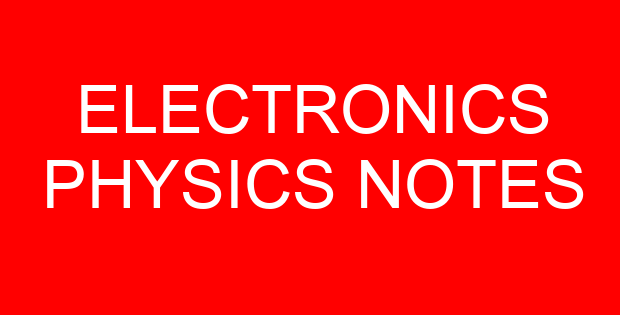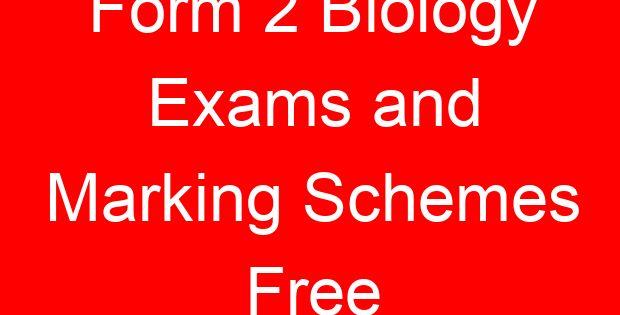KCSE Mokasa Biology Joint Exams and Marking Schemes Free
Name…MARKING SCHEME adm no. ……………class…….
School …………………………………………………
231/1
BIOLOGY
PAPER 1
Time: 2 HOURS
MOKASAIIJOINTEVALUATIONEXAMINATION
KenyaCertificateofSecondaryEducation
INSTRUCTIONS TO CANDIDATES
- Answer ALL the questions.
- Answers must be written in the spaces provided in the question paper.
- Additional pages must not be inserted.
- The paper consists of 12 printed pages.
FOR EXAMINERS USE ONLY
| Question | Maximum score | Candidate’s score |
| 1-27 | 80
|
- Other than observation, name one other scientific skill developed by studying biology. (1mark)
Recording/analysing/drawing/collecting data;
- Name the branch of Biology that deals with the study of phylogenetic relationship among
Organisms. (1mark)
Evolution;
- State three adaptations of the Red blood cell to its function. (3 marks)
- Bi-concave in shape;
- Flexible walls;
- Has haemoglobin ;
- Non- nucleated;
- The following is a transverse section from a young root
(a)(i) Name parts Q and U (2marks)
Q root hair;
U xylem;
(ii) With a reason, name the class of the plant from which the root was obtained (2marks)
Dicotyledonae; star shaped xylem;
(b) State the function of the part labelled Q (1mark)
Absorption of water and mineral salts;
- A little starch solution was kept in a water bath at 37ºC. After a few minutes, the same volume of saliva was added. The experiment was left to stand for 15minutes. The mixture was then tested with Benedict’s solution.
- a) What would you do to the mixture after adding Benedict’s solution in order to get the valid results? (1mark)
Heatto boil/heat/place the mixture in a water bath;
- b) What final color would the solution change to? (1mark)
Green/yellow/orange/brown;
- c) If you added iodine solution instead of Benedict’s solution to the mixture of saliva and starch, what colour would the solution have? (1mark)
Brown colour is retained
- A patient complained of frequent thirst. A sample of the patient’s urine was found not to have any sugar.
(a)Name the hormone the person was deficient of. (1mrk)
Antidiuretic hormone/ Vasopressin;
(b)Name the gland that secretes the above hormone. (1mrk)
Pituitary gland;
- State the advantage of desert animals excreting their nitrogenous waste in form of urea and not ammonia. (1mrk)
Urea requires less water for elimination; hence assist desert animals to conserve body water;
- In an investigation, the pancreatic duct of a mammal was blocked. It was found that the blood sugar regulation remained normal while, food digestion was impaired. Explain these observations. (2 mks)
Pancreatic juice containing digestive enzymes is blocked, from reaching food through
the pancreatic duct; insulin and glucagon which regulates sugar is released directly to
the Bloodstream and reaches the liver where it regulates sugar in the body;
- Explain why glucose does not appear in urine of a healthy person even though it is filtered in
the Bowman’s capsule of a mammal. (1mks)
All glucose is selectively reabsorbed at the proximal convoluted tubule back to the blood in the body system;
- Explain why Lamarck’s theory of evolution is not accepted by biologists today (1mark)
Phenotypically acquired characteristics cannot be genetically inherited;
- Distinguish between survival of the fittest and struggle for existence (2mrks)
Survival of the fittest is a mechanism by which beneficial variations in a population are perpetuated while the disadvantageous variations are eliminated; struggle for existence is where members of a population are constantly competing with each other in an effort to survive;
- The diagram below illustrates a U-tube whose arms are separated by a membrane that allows water molecules only to pass.
- State how the levels of the liquids in the arms would be after several hours. (1mks)
Arm ADrop
Arm B Rise
- Explain the process taking place in the arms of the U-tube (3mks)
The concentrated solution has a higher osmotic pressure; water molecules are drawn across the membrane; by osmosis;
- The equation below represents a physiological process that occur in plants.
6CO2 + 6H2O C6H12O6 + 6O2
- Name two conditions necessary for the process to occur (2mks)
Light; Chlorophyll;
- Identify two adaptations of the leaf for the process indicated by the equation above. (2mks)
- Broad flat lamina to provide a large surface area for absorption of carbon IV oxide and sunlight;
- The thinness of the leaf allows light and carbon IV oxide to pass through a short distance to reach the photosynthetic cells;
- Presence of stomata ensures the efficient diffusion of carbon IV oxide to the leaf,
- The cuticle and epidermis are transparent o allow penetration of light to the palisade cells;
- The palisade cells contain numerous stomata and their arrangement and position next to the upper epidermis enables them to receive maximum sunlight;
- The existence of extensive veins which conduct water and mineral salts to the photosynthetic cells and removes the products of photosynthesis;
- The air spaces in the spongy mesophyll layer are large enough to allow gases to circulate easily;
- (a)Explain the observation made on the shoot when a seedling is placed on a horizontal position (3marks)
Gravity causes auxins to accumulate on the lower part; High concentration of auxins on the shoot stimulate faster elongation of cells on the lower side; causing the seedling to bed upwards;
- b) Black ants will always move to where there is sugar.name the response (1mark)
Black ants by the sugar which they feed on; hence being positively chemotropic;
- The diagram below shows a nerve cell. Study it and answer the question that follow.
- Identify the type of neurone (1mk)
Sensory neurone;
- Give reasons for your answer in 17 (a) above (1mk)
The cell body is situated off the axon;
- c) Using an arrow show the direction of flow of impulse on the diagram (1mk)
On the diagram;
- The diagram below is simple illustration of central nervous system and nerve supply system to the arm. The parts A, B, C and D represents points the nervous system which can be blocked.
Identify the part that is blocked when
- The hand is withdrawn but no pain is felt (1mk)
A
- The pain is felt when the hand is withdrawn (1mk)
B
- The pain is felt but the hand cannot be withdrawn (1mk)
C
- The pain is not felt but the hand can be withdrawn at will (1mk)
D
- Explain how knowledge of genetics can be applied in blood grouping and transfusion (2mks)
Can help in ensuring compatibility between donors and recipients to avoid agglutination; determination of disputed paternity;
- The table below is a representation of a chromatid with genes along its length. It undergoes mutation to appear as shown below.
| Before Mutation | L | M | N | O | P | Q |
| After mutation | L | O | N | M | P | Q |
- Name the type of chromosomal mutation represented (1mk)
Inversion
- Name one mutagenic agent (1mk)
Mustard gas/Colchicine/Thalidomide/DDT
- A certain species of a flowering plant has 46 chromosomes in the somatic cells. State and explain the number of chromosomes present in the endosperm nucleus. (2mks)
69; the endosperm nucleus is triploid (46/2×3)
- The diagram represents a stage in cell division. Study it and answer the questions that follow
- Identify the stage of cell division shown in the diagram above (1mk)
Anaphase I
- Give a reason for your answer in 22 (a) above (1mk)
Bivalents separates and each move to the opposite poles of the cell
- The diagram below illustrates a mature embryo sac.
- Name the structures labelled: (2mks)
A Synergids
BPolar nuclei - What does structure C transform after fertilization (1mk)
Embryo
- Explain why pregnancy is not lost after the first trimester even if the ovaries are removed .
(2mks)
Progesterone is the hormone responsible for maintainance of pregnancy;during the first trimester it is produced by the ovaries;after three months the placenta is fully developed and takes up the role of production of progesterone;
- Identify two adaptations of a gaseous exchange surface (2mks)
- Have a large surface area for efficient diffusing of gases;
- Moist to dissolve respiratory gases
- Have thin epithelium for faster diffusion of respiratory gases
- Highly vascularized to maintain a steep concentration gradient
- (i) Identify the function following parts of a microscope (2mks)
- Diaphragm
An aperture that regulates the amount of light passing through the condenser to illuminate the specimen
- Condenser
Concentrates light onto the stage
(ii) Explain the term resolution as used in microscopy (1mk)
The ability of a microscope to distinguish two very close structures as separate entities
- Name two supportive tissues in plants that are lignified (2 marks)
Sclerenchyma;xylem;
- The diagram below represents nitrogen circulation in an ecosystem.
(a) Identify the following organisms (3marks)
Arhizobium ;( acc clostridium and azotobacter; acc plural) rej wrongsp;
BFungi; acc bacteria;
(b) Name process E
Nitrification;
- (a) Name the type of muscles found in the gut. (1 mark)
Smooth muscles
(b) Give one difference between the muscles above and the one found in the heart (1 mark)
| Smooth muscles | cardiac muscles |
| not striated; | Striated; |
| Uninucleated; | Multinucleated; |
| Spindle shaped; | Cylindrical; |
- State two methods of preventing malaria. (2 marks)
Use treated mosquito nets; slash bushes to prevent mosquito breeding; drain stagnant water;
- A process that occurs in plants is represented by the equation below.
C6H12O6 2C2H5OH + 2CO2 + Energy
(a) Name the process. (1 mark)
Alcohol fermentation/anaerobic respiration ;( rej fermentation)
(b) State the economic importance of this process. (1 mark)
Bread making/baking; manufacture of dairy products; production of biogas ;( any 1)
- State any two rules of binomial nomenclature. (2marks) Genus is written first followed by species; Genus starts with a capital letter; Genus and species are underlined separately when handwritten or italicized in printed work;
- (a) Name the causative agents of the following human diseases (2 marks)
(i) Bilharzia……Schistosomamansoni/Schistosomajaponicum/Schistosomahaematobium ;(Rules apply)
(ii)Amoebic Dysentery…Entamoebahystolytica;
(b) State three methods of controlling air pollution (3 marks)
Use of lead free fuel/petrol; scrapped chimneys in factories; fossil fuels e.gbiogas; biological methods of controlling pests and diseases ;(owtte)
- The diagram below represents a bone and synovial joint. Use it to answer questions that follow.
- Name the bone that articulates with bone labelled K anteriorly (1 mark)
Pelvic girdle;
- Name the part labeled N (1 mark)
Ligament;
- Identify the synovial joint above (1 mark)
Ball and socket joint ;




